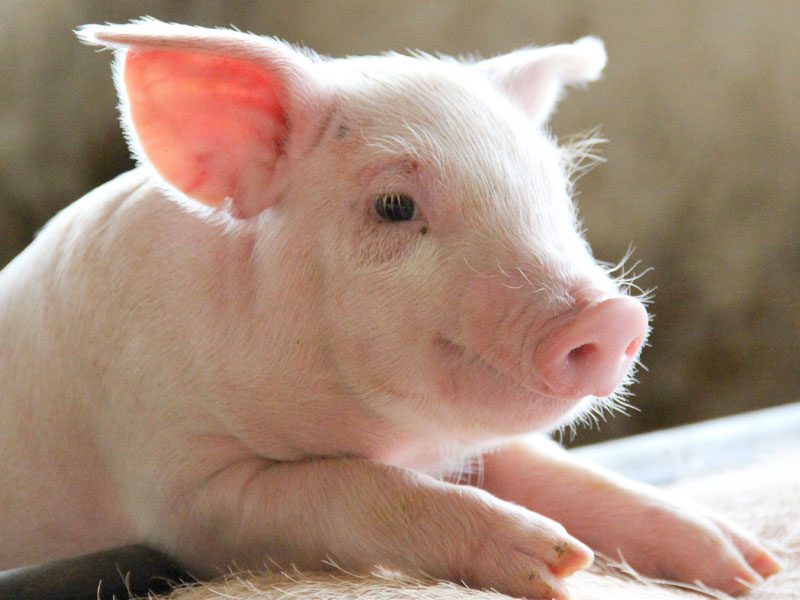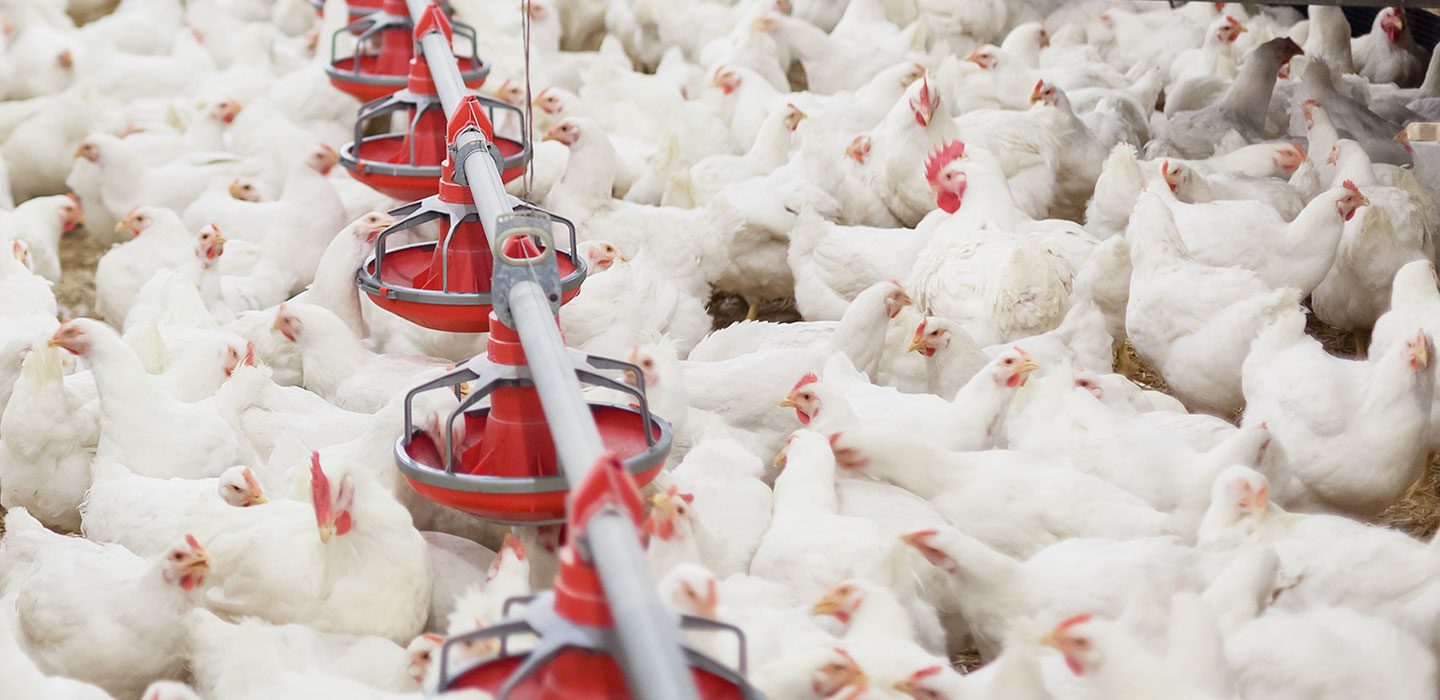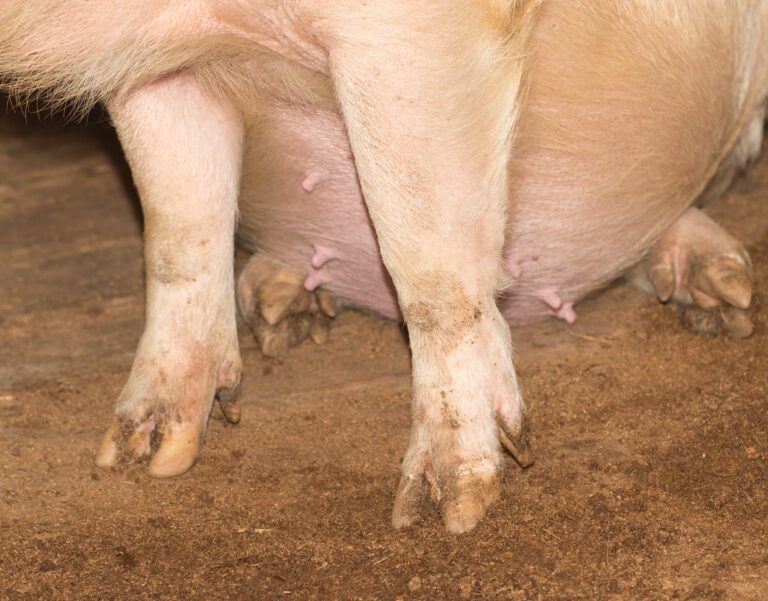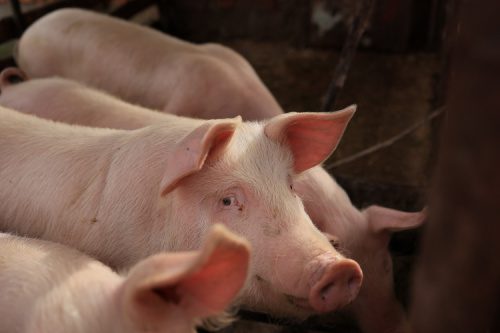Why Trypsin Inhibitors Must Be Addressed in Every Nursery Diet

When it comes to anti-nutritional factors like trypsin inhibitors (TI), the swine industry has long operated on the assumption that the levels we typically see are not a problem or “a little is okay.” That belief is no longer defensible. New university research1, field trials, and soy-based ingredient surveys point to inescapable truth: trypsin inhibitor levels have been on the rise over the last 10 years and even modest levels of TI in soybean meal negatively impact nursery pig performance and cost of growth.
This is a call to action for nutritionists to fundamentally rethink how they manage soybean-based products in the nursery.
The Data Doesn’t Lie: Linear Decline in Performance with Increasing TIU/mg
In a recent 41-day study by Iowa State University1, 1,140 nursery pigs were evaluated across five dietary treatments ranging from 0.41 to 3.96 trypsin inhibitor units (TIU/mg)1. The results were conclusive: every increase in the level of dietary trypsin inhibitors decreased piglet performance.
- Average Daily Gain (ADG) dropped 25% from 0.40 kg/day at 0.41 TIU/mg to 0.30 kg/day in pigs fed 3.96 TIU/mg (P < 0.001)1.
- Average Daily Feed Intake (ADFI) was reduced by 22% at 3.08 TIU/mg compared to 0.41 TIU/mg (0.42 vs. 0.54 kg/day; P < 0.001)1.
- Gain:Feed ratio (G:F) declined in a linear pattern from 0.74 to 0.68 as TIU/mg increased (P < 0.001)1.
- Final bodyweight was reduced by 4 kg, from 22.3 kg to 18.3 kg (P < 0.001)1.
- Within-pen bodyweight variability also increased with higher TIU/mg, indicating greater gut health stress and uneven performance.
- Fecal consistency, mortality, and removals remained unaffected across treatments (P > 0.10), indicating the performance losses were not due to overt health events but to nutritional inefficiencies.
These findings confirm that there is no biologically safe lower limit.
Why the “Safe Level” Myth Persists
The legacy view of TI tolerability partially stems from use of the Urease assay as a proxy for TI. Over typical levels of TI encountered in soybean meal urease is an inadequate predictor of TI2.
The other challenge has been the use of statistical differences between TI levels. Relying on statistical differences ignores the smaller but economically important performance impacts before statistical difference is reached. This provides a statistically significant floor value that ignores economic impacts.
These perspectives have missed the nuanced negative biological effects TI has in the nursery:
- Impaired trypsin activity lowers protein digestibility, even in otherwise well-balanced diets.
- Endogenous enzyme demand increases, stressing the pancreas and altering metabolic priorities.
- Reduced feed intake in the first 10–14 days post-weaning, when pigs are most vulnerable, and lasts well into mid-finishing.
Simply put, diets that look good on paper but contain unmitigated TI quietly erode the nutritional ROI.
Where It Starts: Soybean Meal Quality Is the Culprit
The expanding soy crush capacity in the United States and the possibility of much lower soybean meal prices means higher levels of soy meal and other derivatives are being promoted in pig diets. But higher soy product inclusion increases the risk of antinutritional factors for the pig. Another risk is if a soybean meal plant needs to shut down and restart. Studies show that early-run soybean meal from recently restarted plants often contains lower KOH solubility, more residual hulls, and foreign materials, all indicative of suboptimal toasting which is a risk factor for higher TI levels1.
Further compounding the problem:
- Byproduct reintroduction (e.g., soybean gum and soapstock) adds variability to fat and energy levels while obscuring ingredient origin.
- Surveys of 36 soybean byproducts from 14 processors revealed TI levels ranging from 1 to 10 TIU/mg in seed powder—and those byproducts were added directly back into the final soybean meal1.
These variability factors make it dangerous to assume any given batch of soybean meal is “safe.” This is important information for nutritionists and ingredient purchasing managers.
What Nutritionists Must Do Now
TI isn’t just a raw material issue, it’s a formulation risk. Nutritionists who ignore it are gambling with piglet performance. Those who address it gain performance consistency and a competitive edge. Here’s how:
- Stop assuming soybean meal is TI-neutral. Require routine TI testing of soybean meal, like NOVUS NIR Trypsin Inhibitor testing, upon delivery, and have good relationships with your supplier to understand the timing of production shutdowns and restarts.
- Adopt mitigation strategies to minimize TI impacts. This includes using proteases like CIBENZA® DP 100 Enzyme Feed Additive, with demonstrated activity against both Kunitz and Bowman-Birk trypsin inhibitors.
- Utilize data-driven purchasing decisions—don’t rely just on crude protein guarantees when purchasing soybean meal. Make sure TI is included in your purchasing decisions.
There’s No Room for Assumptions in Today’s Nursery Diets
The nursery phase is foundational, performance losses here ripple into grow-finish, impacting carcass uniformity, days to market, and even survivability. In that context, allowing 1.5 or 2.0 TIU/mg into a diet unaddressed is no different than having a mycotoxin-contaminated diet without a mycotoxin risk mitigator.
The tools exist. The research is clear. The variability is real. You can do something about it.
Final Word: TI Must Be Part of the Equation
Independent of its efficacy in reducing trypsin inhibitor (TI) activity, CIBENZA® DP100 Enzyme Feed Additive provides swine nutritionists with greater formulation flexibility by enabling the inclusion of a broader range of feed ingredients without compromising piglet performance. This flexibility is critical in the face of fluctuating ingredient costs and regional availability. While no level of trypsin inhibitor is without consequence, a nursery feeding strategy that includes CIBENZA® DP100 Enzyme Feed Additive can proactively address both obvious and hidden protein-related threats, unlocking the full growth potential of piglets.
Connect with your NOVUS representative to explore strategies and tools designed to help manage trypsin inhibitor challenges and support your nursery nutrition program.
References:
1 Miller, K. A., Spencer, J. D., Krishnan, H. B., Mendoza, O. F., McCallum, M. N., Mahoney, J. A., Burrough, E. R., & Gabler, N. K. (2025). 14 The impact of soybean derived trypsin inhibitor concentrations on growth performance, health, and variability of nursery pigs. Journal of Animal Science, 103(Supplement_1), 75–76. https://doi.org/10.1093/jas/skaf102.082
2 Chen, J., Wedekind, K., Escobar, J., & Vazquez‐Añón, M. (2020). Trypsin Inhibitor and Urease Activity of Soybean Meal Products from Different Countries and Impact of Trypsin Inhibitor on Ileal Amino Acid Digestibility in Pig. Journal of the American Oil Chemists Society, 97(10), 1151–1163. https://doi.org/10.1002/aocs.12394

Intelligent Nutrition for Your Business
More science. More insight. More inspiration. More ways for you to feed the world.




